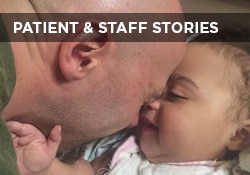This website uses cookies so that we can provide you with the best user experience possible. Cookie information is stored in your browser and performs functions such as recognising you when you return to our website and helping our team to understand which sections of the website you find most interesting and useful.

Susan E. Mazer, Ph.D. Blog
Thoughts and ideas on healthcare
Hi, and welcome to my blog! I'm Susan E. Mazer -- a knowledge expert and thought leader on how the environment of care impacts the patient experience. Topics I write about include safety, satisfaction, hospital noise, nursing, care at the bedside, and much more.
Encore Post: Hospital Room as the Classroom of Recovery
July 1, 2016
 Note: This is a post from 2014 that is still relevant to the hot-button issue of preventing readmissions.
Note: This is a post from 2014 that is still relevant to the hot-button issue of preventing readmissions.
There are many ways to learn. However, the ultimate goal of all teaching is to transfer information from teacher to students so completely that what is learned cannot be unlearned.
For patients, the information must be meaningful and motivational for it to actually impact their health.
The hospital room is the classroom of recovery. And, it is the place where patients have a shot at having a better future, regardless of the outcome.
It is a place of learning under all conditions. This learning happens in many ways: experience, observation, self-reflection, interaction, reaction, etc. It also can happen through technology, but the personal interaction is far more effective and, without question, redundancy is critical.
The hospital room is where nurse educators come to patients with information, but also where information is drawn from everyone who interacts with the patient. During that time, the most profound of moments learning can be life-changing.
When patients (which, for this discussion, includes family members) really fully understand their circumstances and the reason behind each recommendation, they have a much better shot at choosing health over sickness. Part of patients’ education is for caregivers to put the responsibility in their hands, respect their choices and struggles, and let them know they care about what happens to them.
Everyone is an Educator
The reality is that everyone in the hospital educates. Everyone who interacts with a patient gives them a clue as to where they stand as a person, as a patient, and where their life is held.
These people are the housekeeper who can remember the patient’s name and reaffirm his or her personhood. The nurse who remembers what bothered the patient last night. And the physician who treats with information as well as caring.
The silent educator is the hospital environment itself. It also speaks of respect or disrespect, caring or disregard, consideration, or lack of concern.
When patients and families see the evidence around them that brings value to who they are, the conversation is different. The listening is deeper. Or, at least there is a shot at tranforming information into knowledge that will be actionable.
Any distraction, such as too many people around not involved in the discussion, the banter of the television, noises from the corridor — any of these can undercut the integrity and seriousness of the education and cause the teachable moment to disappear.
Although everyone and everything teaches and informs, the buck stops with the patient educator — the person whose sole job is to make the future for patients better.
Why aren’t patient educators C-suite level positions? Why wouldn’t those who are so fully accountable to translating a medical crisis into actionable plans for a healthier future be integrated at the top of the organization?
Until the value of educating the patient and family moves beyond the regulatory requirement and desire to lower overall costs of healthcare, this role of transferring vital information to the patient in actionable and inspired ways is lost. There are so many opportunities and so little investment in the people who can make the personal difference.
C-suite level puts this piece where it should be: at the top.
P.S. If you like this post, please do me a favor and share on LinkedIn, Twitter, Facebook, etc. Also to get automatic notices when a new post is published, subscribe (upper right). No spam – just great content. Thanks!










